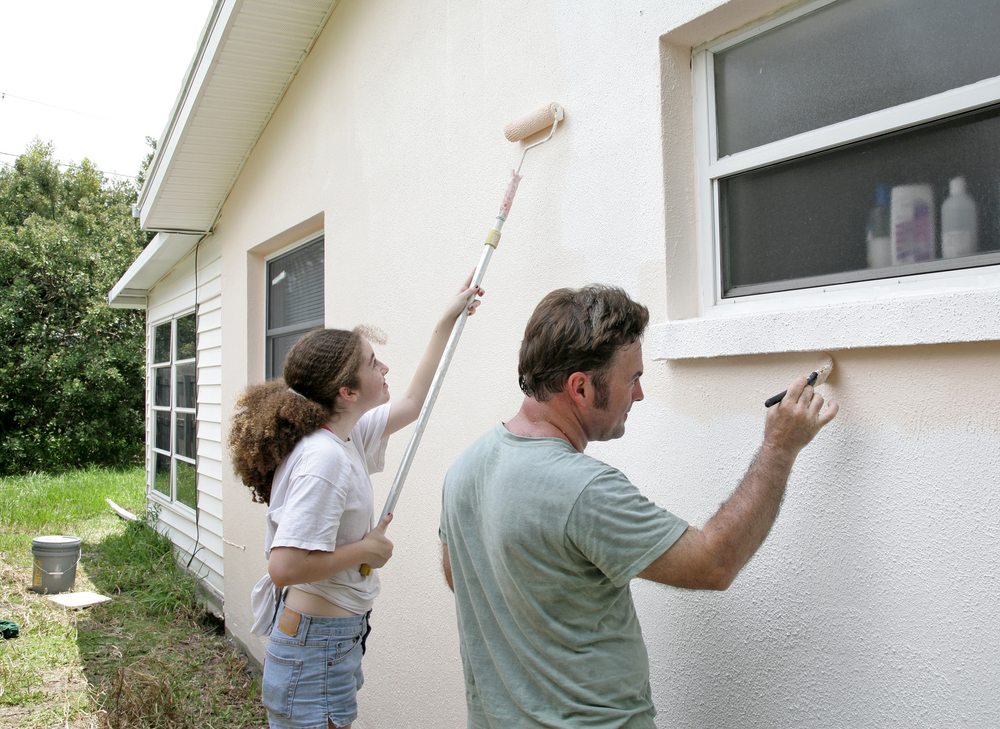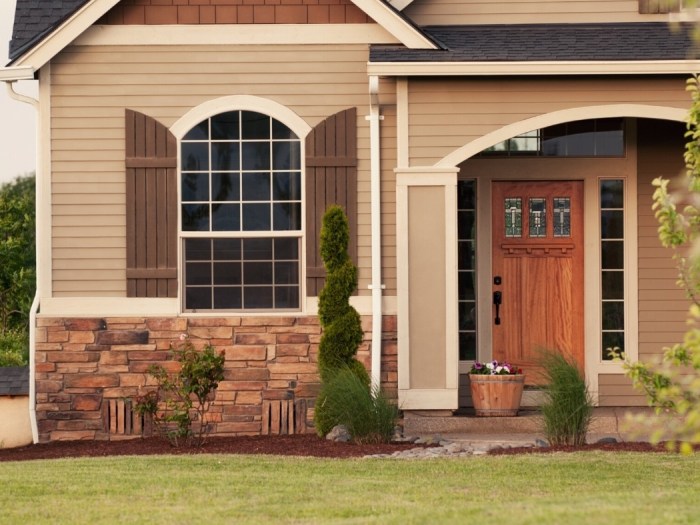How to Prep Your Home for Exterior Painting Like a Pro
How to Prep Your Home for Exterior Painting Like a Pro sets the stage for this enthralling narrative, offering readers a glimpse into a story that is rich in detail with casual formal language style and brimming with originality from the outset.
As we delve into the intricacies of preparing your home for exterior painting, we uncover essential steps and tips that will elevate your painting experience to a professional level.
Research and Planning

Before embarking on your exterior painting project, it is crucial to conduct thorough research and meticulous planning to ensure a successful outcome.It is essential to research paint colors and types suitable for exterior surfaces to achieve a long-lasting and visually appealing result.
Consider factors such as climate, architectural style, and personal preferences when selecting the right paint for your home.
Calculating Paint Quantity
To determine the amount of paint needed for your project, calculate the surface area to be painted by measuring the height and width of each wall. Use the following formula to estimate the quantity of paint required:
Surface Area = Height × Width
Once you have calculated the total surface area to be painted, consult the paint manufacturer's instructions to determine the coverage rate per gallon. Divide the total surface area by the coverage rate to determine the number of gallons needed for your project.
Checking the Weather Forecast
Checking the weather forecast before starting the painting process is essential to ensure optimal painting conditions. Avoid painting during rainy or extremely hot days, as these conditions can affect the paint's adhesion and drying time. Aim for mild temperatures and low humidity levels for the best results.Consider scheduling your painting project during a period of stable weather to minimize potential disruptions and ensure a smooth painting process.
Surface Preparation
Properly preparing the exterior surfaces of your home before painting is crucial to achieving a professional-looking finish that lasts. This involves a series of steps to ensure the paint adheres well and provides long-lasting protection.
Cleaning and Washing
- Start by washing the exterior surfaces with a mixture of water and a mild detergent to remove dirt, grime, and any mildew.
- Use a pressure washer for more stubborn areas, but be cautious not to damage the surface with too much pressure.
- Allow the surfaces to dry completely before moving on to the next step.
Scraping and Sanding
- Inspect the surfaces for any loose paint, and scrape off any peeling or flaking paint using a scraper or putty knife.
- Sand down rough or uneven areas to create a smooth surface for the new paint to adhere to.
- Make sure to wear a mask and protective gear while sanding to avoid inhaling dust particles.
Repairing Damaged Areas
- Fill in any cracks, holes, or gaps with a suitable exterior-grade filler or caulk, and smooth it out for a seamless finish.
- Allow the filler to dry completely before sanding it down to ensure a flush surface with the surrounding areas.
Applying Primer
- Priming the exterior surfaces before painting is essential to promote better adhesion of the paint and enhance its longevity.
- Choose a high-quality exterior primer that is suitable for the surface material and the type of paint you will be using.
- Apply the primer evenly using a brush, roller, or sprayer, and make sure to follow the manufacturer's instructions for drying times.
Tools and Equipment

When it comes to exterior painting, having the right tools and equipment is essential to achieve a professional finish. Here are some of the essential items you will need:
Brushes
- A high-quality angled brush for cutting in around edges and corners.
- A larger brush for painting larger surface areas.
- Ensure the bristles are durable and suitable for the type of paint you are using.
Rollers
- Choose a roller with the appropriate nap length for the texture of your exterior walls.
- Use a roller extension pole for reaching high areas without the need for a ladder.
- Rollers are great for applying paint quickly and evenly.
Sprayers
- An airless paint sprayer can be useful for covering large areas quickly.
- Ensure you have the correct nozzle size for the type of paint you are using.
- Practice using the sprayer on a test surface before applying it to your exterior walls.
High-Quality Paint Brands
- Consider brands like Sherwin-Williams, Behr, or Benjamin Moore for high-quality exterior paints.
- Choose a paint that is durable, weather-resistant, and provides good coverage.
- Opt for paints specifically designed for exterior surfaces to ensure longevity and a professional finish.
Painting Techniques
When it comes to painting the exterior of your home like a pro, mastering different painting techniques is crucial. Whether you choose to brush, roll, or spray paint, each method has its own benefits and challenges. Here are some tips to help you achieve a smooth and flawless finish.
Brushing
- Use high-quality brushes to avoid leaving brush marks on the surface.
- Apply paint with even and smooth strokes in the same direction for a consistent finish.
- Overlap each stroke slightly to blend the paint and avoid streaks.
Rolling
- Choose the right nap roller cover for the type of surface you are painting (smooth or textured).
- Roll paint in a "W" pattern to evenly distribute the paint and avoid roller marks.
- Work in small sections to maintain a wet edge and prevent lap marks.
Spraying
- Adjust the spray nozzle to control the paint flow and fan width for even coverage.
- Keep the sprayer moving to prevent buildup and drips on the surface.
- Use a back-brushing technique to smooth out any overspray and achieve a uniform finish.
Proper technique and the right tools are key to achieving a professional-looking paint job on your home's exterior.
Remember, regardless of the painting technique you choose, allowing proper drying times between coats is essential for a flawless finish. Rushing the process can lead to peeling, cracking, or uneven paint coverage. Take your time, follow the manufacturer's instructions, and enjoy the transformation of your home with a fresh coat of paint.
Safety Precautions
When prepping your home for exterior painting, it is crucial to prioritize safety to avoid accidents and injuries. This includes using personal protective equipment, taking precautions when working at heights, and properly storing and disposing of painting materials.
Personal Protective Equipment
- Always wear goggles to protect your eyes from paint splatters and debris.
- Use gloves to shield your hands from chemicals in the paint and harsh cleaning agents.
- Wear a mask to prevent inhalation of fumes and dust particles.
Working at Heights and Ladder Safety
- Ensure that ladders are stable and on level ground before climbing.
- Avoid overreaching while on a ladder and maintain three points of contact at all times.
- Use a ladder with the appropriate height for the task and never stand on the top two rungs.
Storage and Disposal of Painting Materials
- Store paint cans in a cool, dry place away from heat sources and out of reach of children and pets.
- Dispose of paint and painting materials properly according to local regulations. Consider donating unused paint to local organizations or recycling centers.
- Avoid pouring leftover paint down the drain as it can harm the environment. Allow it to dry out completely before disposing of it in the trash.
Final Review
With these insights and guidelines, you are now equipped to transform your home's exterior with finesse and precision, ensuring a stunning result that will stand the test of time. Embrace the journey of painting like a pro and watch your home come to life with vibrant colors and impeccable finish.
Expert Answers
How do I choose the right paint color for my home's exterior?
Consider the architectural style of your home, the surrounding environment, and any existing colors on your property to select a complementary exterior paint color.
Do I need to apply primer before painting the exterior?
Yes, applying primer is crucial for better adhesion and longevity of the paint on exterior surfaces.
What safety precautions should I take during exterior painting?
Wear personal protective equipment, follow safety guidelines for working at heights, and ensure proper storage and disposal of painting materials to stay safe during the painting process.




